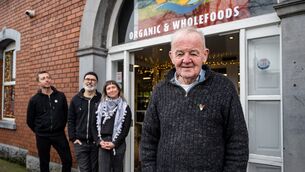With cheese, please
Nowadays there is almost an Irish farmhouse cheese for every letter of the alphabet, over 60 in all and probably a few others I don't know about.
The lovely Veronica Steele, who with her husband Norman makes the now legendary Milleens cheese on their farm near Allihies on the Beara Peninsula, is considered to be the matriarch of the farmhouse cheese industry.








